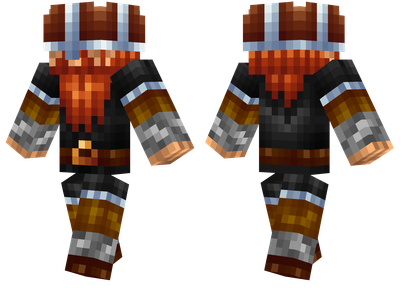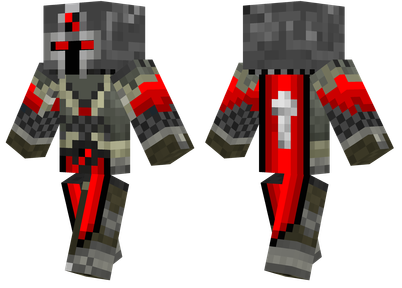This tutorial is set by the author to use the CC By-NC-SA protocol.
↓ ↓ ↓ ↓ ↓ according to
Before eating this tutorial, watch the author's melting salt pile to introduce the video after introducing the video.
This tutorial is not an entry tutorial. Please see the video of the multi -party structure of the foundation of the foundation.
MOD version: 2.18
Note: If there are unscuffy content in the game, you can install automatic Chinese update this module
Here we only discuss the simplest melting salt pile power generation system.
The arrow represents the input and output of fluids and items, and the direction of the arrow is output direction
To build the simplest melting salt pile, you need to complete the 4 parts:
Melving fuel production line: production fuel, processing solid raw materials (ingots, pink powder) into melting nuclear fuel, and recover the product of reactor;
Plug -salt reactor: Obtain nuclear fuel from the fuel production line, the cooler is heated in the reactor and transports it to the heat exchanger;
Heat exchangers: Input water and exchange heat with thermal coolant to generate high -pressure steam to transfer to steam turbine;
Steam turbine: Enter high -voltage steam, produce RF energy (that is, power generation), and output waste steam (waste steam can become low -voltage steam in the new version)
Because the cooler can be used circularly, and the water can be provided by the infinite water cubes of the module, it only requires input nuclear fuel to maintain the operation of the reactor.
Next will explain some details in each stage.
1. Fuel production line
Click on the picture to view the big picture, or right -click to save the picture
From the figure above, you can know that the required machines, input objects, and the output of the entire process. In fact, you need all the machines in the figure. You can put all the machine well according to the arrows and boxes;
Melving fluorine lithium and fluorine can be recycled in the exhausting products. Therefore, the melting fluorine lithium and fluorine only need to be made to a certain amount. To maintain the operation of the melting salt stack, it only needs to keep input radioactive nuclear materials.
Given that the amount of information in the figure may be a bit large, some summaries are made here:
Taking TBU fuel as an example, the production of 288MB fuel requires 1 钍 232, 1 pink powder, 2 lithium powder, and 5 crushing square fluoropo potassium stones (or 5 crushing fluorine salt.It requires 4 crushed square fluorop potassium stones and 1 crushing fluorine salt); at the same time, it produces 2.5B hydrogen, 2.5B oxygen (if produced with copolyar sodium potassium alloys) and some fission products;
A fission container requires 2592MB fuel to fill it, so the minimum fuel quantity (MB) = 2592MB*number of fission containers;
If a nuclear fuel that is used for solid fission piles is used to make fuel for melting salt piles, it can just fill 1 crack transformer (2592MB);
However, considering the speed of pipeline cache and the production speed of the machine, it is necessary to make more fuels on the basis of the minimum amount of fuel to ensure that the fission container has always been full.
Note: In the 2.18 version, I tested that fission containers, coolant heater, thermal exchange pipelines, and condensate pipeline input streaming appreciationThe entire pipeline is filled. In theory, as long as the number of MB of the number of MB of the pipeline MB (a pipe consumes 20MB of fluid at a time), it is recommended to do more to prevent the cache of the pipeline or other factors cause insufficient fluid distribution, resulting in efficiency efficiency, and efficiency.Decrease; in fact, the number of fluids in the pipeline will affect the efficiency during work, and affect the maximum length of the pipeline. When the pipeline exceeds the maximum length, the efficiency decreases. The specific solution depends on Section 6.
If the product cannot be output, it will accumulate at the end of the pipeline. If it is piled up, the pipe block will stop working.
If you have made enough fuel, then the production line that maintains the operation of the melting salt reactor can be simplified into the figure below:
2. Melving salt reactor
The placement rules in the melting salt reactor are the same as the solid fission reactor. However, because the reactor uses fluid fuel, the melting salt fission container and the cooling agent heater are the pipe system, so the internal components should be placed into a pillar as much as possible.You can use a nuclear power simulator to design the reactor:
You need to write down a few values here: Base Power at the bottom, as well as FUEL CELLS, COOLING, Heat Mult (rolling bar to the bottom) in the left stats, so:
Plug -salt reactor production heat = basic energy (Base Power)*Number of fission containers (FUEL Cells)*Heat Mult
The cooling rate of melting salt reactor = cooling rate (COOLING)*4
The basic heat of melting nuclear fuel is equal to the basic energy of the corresponding solid low -density fuel;
The cooling rate of the coolant is 4 times the solid fission reactor cooling element.
Because the melting salt pile is generated by pure heat, in the case of fuel efficiency greater than 1, the melting salt pile is more advantageous than the solid fission pile:
It can be seen that the fission container should be tight as much as possible under the condition of sufficient cooling capacity.
3. Hot exchanger
Before designing the heat exchanger, you must calculate the number of contact surfaces between the coolant pipe and the water pipeline. The specific calculation method can see the calculation of the power generation of the first section 5 of the tutorial;
Or use this simple formula:
Number of contact surface = Cooling agent heater quantity*Cooling agent requires cooling amount*The heat exchange channel thermal magnification of the cooling agent*melting salt pile cooling efficiency/18000
Number of cooler heater: The number of cooling agents heater in the melting salt pile, different coolant must be calculated separately
Cooling agent requires cooling amount: find the corresponding thermal cooler in JEI, then right -click to view the synthetic table, click the thermal exchange pipe tag, move the mouse to the arrow, show that the cooling amount needs
Thermal exchanges of the coolant's thermal exchanges: Find the corresponding thermal exchange pipe in Jei, move the mouse to the item, and display the heating multiplier rate
Cooling efficiency of molten salt pile: value = melting salt reactor production heat/melting salt reactor cooling rate*production energy efficiency (EFFICIENCY), please refer to the second section of the tutorial.The value of the cooling rate of salt reactor/melting salt reactor cannot be greater than 1
After calculating the number of contact surfaces, select a length, the number of contact surfaces is divided by the length, and how many contact surfaces are required to calculate a layer. Finally, the heat exchange pipeline is designed.
What to pay attention to:
1) If the efficiency of the cooling agent thermal exchange pipeline is inconsistent, and all the cooling agent thermal exchange pipes in the thermal exchanger are not filled with the thermal coolant, the efficiency of the entire heat exchanger will decrease.
Solution:
① The cooling agent thermal exchange pipes are filled with thermal coolant (not recommended, each pipe needs 32B fluid, while the common crystal sodium potassium alloy is manufactured and costs consumable);
② The cooling agent thermal exchange pipeline maintains the same efficiency
The figure below is an efficiency 4 swing method (cross -sectional view):
③ You can modify the configuration file to reduce the pipeline capacity and fill in each pipeline at the same time.Specific modification method depends on Section 6
2) A large amount of steam will be generated when the heat exchanger runs. Pipelines or other things need to be extracted with nearly infinite pumping rates, because the heat exchange entrance will not automatically enter output fluids.It is recommended to use an integrated pipeline (very cheap, no channel number limit, almost infinite transmission rate).
4. Steam turbine
First of all, you must calculate the speed of high -voltage steam. The specific calculation method can see the calculation of the power generation at the bottom 5 of the tutorial;
Of course, you can also use this formula to calculate:
Steaming rate (mb/t) = Number of cooling agent heater*Cooling agent requires the cooling agent thermal exchange pipeline thermal magnification*water exchange pipe guidance of water
Number of cooler heater: The number of cooling agents heater in the melting salt pile, different coolant must be calculated separately
Cooling agent requires cooling amount: find the corresponding thermal cooler in JEI, then right -click to view the synthetic table, click the thermal exchange pipe tag, move the mouse to the arrow, show that the cooling amount needs
Thermal exchanges of the coolant's thermal exchanges: Find the corresponding thermal exchange pipe in Jei, move the mouse to the item, and display the heating multiplier rate
Water thermal exchange pipeline thermal magnification: Find the corresponding thermal exchange pipeline in Jei, move the mouse to the item, display the heating multiplied rate
Cooling efficiency of molten salt pile: value = melting salt reactor production heat/melting salt reactor cooling rate*production energy efficiency (EFFICIENCY), please refer to the second section of the tutorial.The value of the cooling rate of salt reactor/melting salt reactor cannot be greater than 1
The speed of the turbine blade processing steam is 100MB/T, and the steam generating rate is divided by 100 calculations. How much blades are required;
In the new version (2.16+), the rotor axis can be placed into 2*2 or even larger, but the section must be square
For example, by calculating 100 turbine blades, the diameter of the rotor axis is 3 (that is, 3*3), and the length of the blade is 3.3 layers;
Calculate the order of leaves through the steam turbine calculator (please click the link). Select a shaft length. You can first select it as twice the number of blades layer:
It can be found that except for rotors, the number of other leaves is 4, one more layer, minus the axis length by 1 until the number of leaves is 3
The length of the rotor shaft is finally determined that the diameter of the rotor shaft is 3, a shaft length of 5, the length of the leaf length is 3, the internal space 9*9*5 complete turbine design.Perfect design
What to pay attention to:
1) The steam input rate should be constant, do not intermittent, otherwise the efficiency will be severely reduced. Things that can set the fluid transmission rate can be used, such as the fluid output port of the integrated pipe;
2) The current turbine rotor will be very stuck, and it will not be rendered after 64 square meters from the turbine.
5. Calculation of power generation
The melting salt pile can be said to be the most complicated machine of this MOD. When calculating the power generation, it needs to be transformed many times, but fortunately, a foreign boss wrote this calculator.
Note: The secondary steam circuit of the original table will be calculated errors. Now it has been corrected. Please download the revised version of the form
Download link:
Https://pan.baidu.com/s/1_uy7AGU9TV9TCNHKHJIEDG extract code: yg5k (revised version, part of the translation)
Https://docs.google.com/spreadsheets/d/1zv5va57mvol866662ce9xw2p4jg4cwhd9qedlqm (original link)
How to use:
First design the melting salt reactor, fill in the red input area on the left side of the form, and the cooling agent base cooling rate does not need to be modified
Fill in the cooling efficiency of the melting salt reactor, value = melting salt reactor production heat/melting salt reactor cooling rate*production energy efficiency (EFFICIENCY), specific tutorial No. 2 and 3
After filling in all the data, the automatic calculation results are displayed in the blue area on the right. For melting salt piles that only use high -voltage steam power generation, you only need to look at the contact demand for coolant and water
The secondary steam circuit refers to the input high -voltage steam into another heat exchanger, exchanging heat with water to generate ordinary steam, and then use it for power generation.
6. Solve the problem of pipeline efficiency
The current version of the pipeline will have a maximum length. The efficiency decreases after the pipeline exceeds the maximum length.The fluids of the pipeline will become less and less. Until the subsequent pipeline fluid transmission speed is lower than the fluid consumption (conversion) speed, the pipeline stops working until the accumulation of sufficient fluids will continue to work, so the overall efficiency of the machine decreases.
After the simulation of the program, it is found that the maximum length of the pipeline is related to the initial fluid and fluid consumption speed of the pipeline. The larger the initial fluid, the longer the maximum length, and the faster the fluid consumption rate, the shorter the maximum length.
You can avoid this problem by changing the configuration:
1. Module settings-> NUCLEARCRAFT-> Hot exchange configuration, turn to the bottom
2. Set Exchange Tube Spread Ratio, CondenSer Tube Spread Ratio, so that every pipe will try to pass all fluids to the next pipeline
3. The fluid capacity of thermal exchange pipeline (that is, the one translated into a pipeline thermal conductivity) requires two values. The first is the input fluid capacity (such as water is input fluid), and the second is the output fluid capacityIt is the initial fluid). The first numerical setting is smaller, which can reduce the number of coolant production. Considering the speed of the fluid, the length of the heat exchanger is up to 24 blocks, which is taken as 20 blocks.Pipeline length)*25 (0.5 seconds of water consumption)*thermal conductivity rate*contact the number of contact surfaces with other thermal exchange pipelines.At least it is set to 2000. If the heat is used to exchange heat, this value must be multiplied by 2; the output fluid capacity is set to 5 times the input fluid capacity, at least 100,000; at least 100,000;
Condennser Tube Tank Capacities also has two values. The first is the input fluid capacity, and the second is output fluid capacity.Cooling liquid block, then value = 20*2730 (0.5 seconds consumed low -quality steam)*thermal conductivity*and the number of contact surfaces of the coolant block = 218400, so the input fluid capacity is at least 218,400, and the output fluid capacity can be set to follow input.The fluid capacity is the same.To sum up, the fluid capacity of the thermal exchange pipeline is set to 2000, 10,000, and the fluid capacity of the condensed pipeline is set to 218400, 218400;
If the condensed water cycle used in the melting salt pile, or the complete Langken cycle plan, due to the huge consumption of waste steam, the fluid capacity of the heat exchange pipeline needs to be set to 80,000, 80000, and the value can be further changed. At the same timeSmall.
Other melting salt pile schemes:
Melting salt pile- "heat exchanger-high-voltage steam-" heat exchanger-low-voltage steam-- "turbine
Melting salt pile- "heat exchanger-high-voltage steam-" turbine-waste steam-"heat exchangeer-low-pressure steam--" turbine
... There are many other solutions
The highest efficiency should be the complete Langken loop scheme displayed by the author of the nuclear power process. The design scheme displayed in this tutorial is the simplest and the least consumables, but the lowest efficiency
Although the efficiency is low, it is still more than 10 times higher than the solid fission pile.
↓ ↓ ↓ ↓ ↓ according to
All links in the tutorial:
Video of the author of nuclear power process: melting salt pile, thermal exchanger, nuclear power simulator, dual -circuit steam turbine (complete Langken loop)
Tools: nuclear power simulator, steam turbine calculator (tutorial link)
Thermal switch calculator:
Https://pan.baidu.com/s/1_uy7AGU9TV9TCNHKHJIEDG extract code: yg5k (corrected version, part of the translation)
Https://docs.google.com/spreadsheets/d/1zv5va57mvol866662ce9xw2p4jg4cwhd9qedlqm (original link)
If there is something unclear about the tutorial or you need to supplement, you can say it in the comment area














